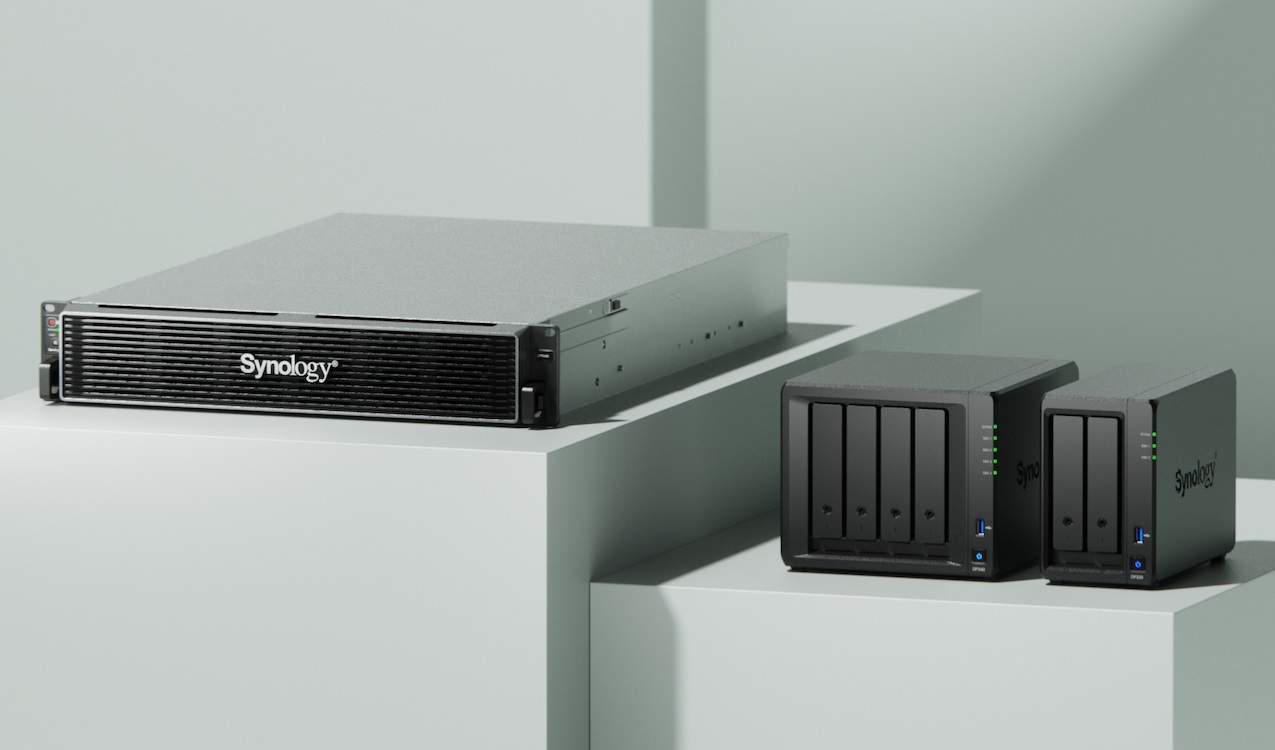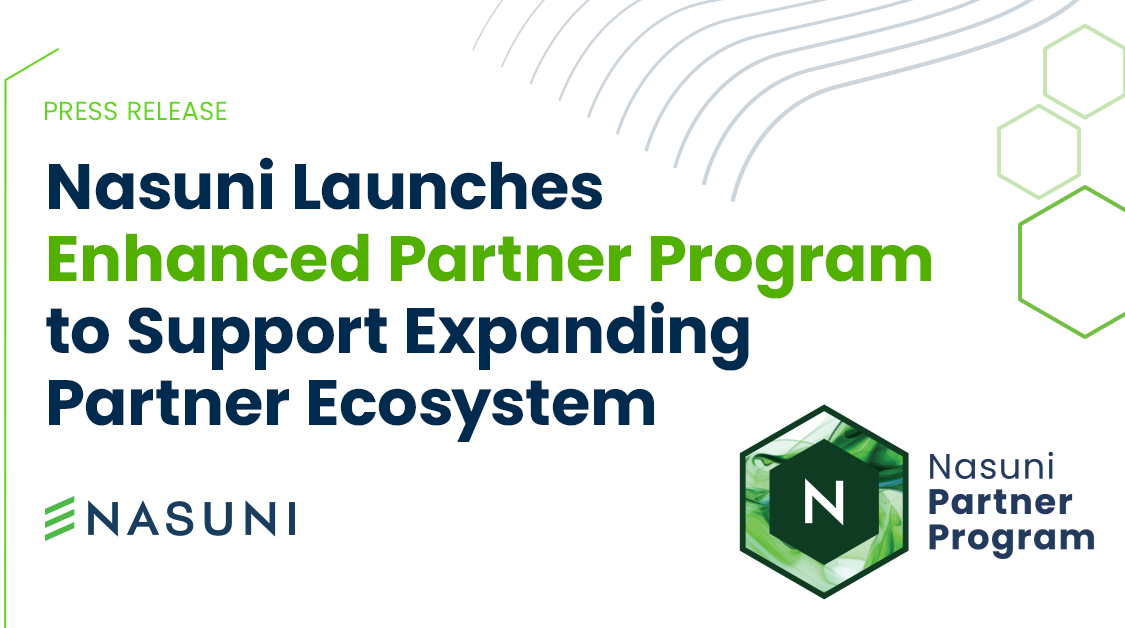Data
Data
Data Centre Compliance: Standards, Risk & Governance
News
Arctera named a Leader in Gartner Magic Quadrant
Arctera (Veritas Technologies), a data management expert and formerly part of Veritas, has been positioned as a Leader in the inaugural Gartner Magic Quadrant for Digital Communications Governance and Archiving Solutions (DCGA). The report’s publication comes shortly after Arctera announced it will put renewed focus on its Data Compliance InfoScale and Backup Exec businesses, following its split from Veritas.
The new Gartner report covers a landscape that Arctera believes is marked by growing multichannel and AI-powered communications, which are subjecting organisations to greater regulatory scrutiny and steep penalties for violations. To mitigate data compliance risks in this evolving landscape, organisations from the most heavily regulated industries around the world rely on information governance, eDiscovery and surveillance products from Arctera. This includes more than 70% of the world’s top financial firms.
Lawrence Wong, now Chief Executive Officer at Arctera, says, “The issue of data compliance is a board-level conversation, driven by the enormous growth in data, digital and off-channel communications and the rise of generative AI. The complexity of compliance challenges is increasing and so are the stakes. Arctera understands this well. We view Arctera’s (Veritas Technologies’) position in the Gartner Magic Quadrant for DCGA as a testament to the strength of our portfolio and proven expertise in helping organisations simplify compliance.
“Our data compliance business has consistently been an industry leader. With the opportunity to put the spotlight even more on compliance within Arctera, we intend to extend our position and bring even greater value to our customers.”
Tom Lounsbury, Director of Business Development at Bluesource, notes, “When our customers are evaluating compliance solutions, they want the confidence that comes from working with a specialist like Bluesource, deploying a solution from an industry leader like Arctera. When it comes to compliance, organisations want to trust that technology is at the forefront of innovation, using the most advanced tools to ensure that they meet even the strictest of regulatory standards.”
Arctera Data Compliance offerings are available across all operational models, including on-premises, self-managed and SaaS. Visit arctera.io on 13 January 2025 to download a complimentary copy of the full Gartner Magic Quadrant for Digital Communications Governance and Archiving Solutions.
Simon Rowley - 10 January 2025
Data
News
Synology enters enterprise market with ActiveProtect
Synology has announced the general availability of ActiveProtect - its new off-the-shelf product which integrates enterprise-scale data backup, recovery and management into one unified solution.
Building from Synology's experience working with small to medium businesses, ActiveProtect is built on being fast, visible and available for businesses whether they’re scaling or existing large-scale enterprises, public sector organisations and education institutions.
Designed to simplify complex data protection, ActiveProtect offers comprehensive platform support, advanced security and scalability. This is all included within a competitive, transparent pricing model, with businesses able to access full platform support and complete advanced protection features.
“With our heritage in building products for time-poor, and often non-technical, small to medium businesses, ActiveProtect has been designed with simplicity and ease of use in mind,” says Chad Chiang, Managing Director for Synology UK.
“With research showing that around 70% of businesses fail within three years of experiencing a cyber attack, ActiveProtect delivers advanced protection against cyber threats alongside real-time backup, with data accessible from any location and easily recoverable whenever the customer needs it.”
The capabilities of the platform sit across backup, recovery and management.
Cost-effective backup
ActiveProtect has been designed to protect everything in a single platform from devices, to Software-as-a-Service programmes, file servers and virtual machines. It does this by using a high efficiency backup engine, complete with features such as optimised storage allocation, incremental backup and deduplication technology.
According to Gartner, cost remains a primary concern for CIOs, and as such within ActiveProtect’s storage allocation capability, the device allows the partitioning of storage into a performance tier and a capacity tier. The benefit of this approach is that it eliminates operational costs and reduces storage costs, all the while delivering enhanced data security.
The solution is able to help enterprises achieve superior performance including a reduction of 99% in data transmission, up to seven times faster SaaS backup and over two times the capacity of backup copy.
Recovery: A 3-2-1-1-0 strategy
With the development of this product, Synology recognised the need to extend recovery assurance beyond the industry standard 3-2-1 rule. That is the rule that recommends having three copies of data, two different media and one off-site copy.
ActiveProtect’s recovery capabilities extend the 3-2-1 industry standard backup strategy to add a further one copy of data which is offline or immutable and ensure zero errors, giving the assurance to security teams that they can recover with confidence.
Simplifying multi-site management
ActiveProtect simplifies multi-site management with capabilities extending to 2,500 sites/backup servers and 150,000 devices and/or SaaS accounts, allowing for businesses to scale. With the ability to manage all components in the backup ecosystem in a single pane with the efficiency and ease that Synology’s traditional customer base of time-poor and non-technical small businesses need, large-scale organisations can scale with simplicity.
Fast, Visible, Available
One of the key features of ActiveProtect is its advanced security, with the product offering immutable backups, air-gap capabilities and regulatory compliance to help guard against cyber threats. With ActiveProtect, IT teams can be assured that when a back-up is taken, it’s always going to be accessible, however many years later, without the risk of any files being corrupted or inaccessible.
This key feature also enables IT teams to conduct activities such as practice data restorations, a key exercise which allows IT teams to fully understand how to recover their data, should they ever need to, for example in the event of experiencing a cyber attack.
This is particularly important for organisations in the current cyber threat environment. In April 2024, the Government released its annual Cyber Security Breaches Survey which showed that half of businesses (50%) and around a third of charities (32%) had experienced some form of cyber security breach or attack in the previous 12 months.
Chad continues, “Against a backdrop of cyber threats that are rising in sophistication, scale and speed, preparedness is critical, but it does not need to be complex. The priority of this solution is to offer enterprise customers a trusted platform that is easy to set-up, use and manage. We’re excited to be entering this new market, bringing with us the learnings from our existing customer base, and look forward to playing a role in giving IT teams some peace of mind that they’ve invested in a simple security solution that just works”.
An all-inclusive platform
Combining backup, recovery and management in a single appliance, ActiveProtect eliminates the need for separate hardware and software, sizing, purchase and maintenance. It protects PCs, Macs, file and physical servers, virtual machines, databases, and Microsoft 365 services all through one, single intuitive interface.
For enterprise customers, which may have multiple sites across geographies and locations, the ability to protect their data from one place is key. ActiveProtect’s scalable management supports users in viewing or monitoring up to 150,000 workloads or 2,500 sites, providing scalability, enterprise-grade data visibility and control.
ActiveProtect is now available globally through Synology’s distributor and partner network.
Simon Rowley - 9 January 2025
Data
News
Keepit secures funding to accelerate product innovation
Keepit, an independent, cloud-native data protection and backup provider, has announced a $50 million (£40.3m) funding round, led by existing investor One Peak, and EIFO, the Export and Investment Fund of Denmark. This funding round marks the company’s third equity investment in the past four years, bringing the total funds raised to approximately $90 million (£72.5m).
Keepit states that this latest investment underscores the company's rapid growth and solidifies its position as a leader in SaaS data protection. The new investment will be directed towards expanding the company’s go-to-market efforts and fuelling continued product innovation.
Keepit’s mission to provide a vendor-independent, dedicated infrastructure for SaaS data protection has resonated with a broad range of enterprise customers as its products already support 5 million users globally. With its latest funding, Keepit is poised to accelerate its global expansion strategy, prioritising key markets like the US, Europe, and other high-growth regions, while bolstering Keepit’s network of partners.
Simultaneously, Keepit plans to intensify its focus on product innovation, advancing its cutting-edge, cloud native solutions to empower organisations in safeguarding their SaaS data effectively and reliably. This will include broader workload coverage and additional data management and intelligence capabilities for the enterprise.
“Our commitment to innovation and solving our customers’ most pressing data protection challenges is what drives us forward,” says Morten Felsvang, Keepit Co-founder and CEO, and Frederik Schouboe, Keepit Co-founder and Chief Vision Officer. “This new funding will allow us to expand our reach and continue innovating the most advanced SaaS data protection solutions on the market. We’re thrilled to see such strong support from our investors, who understand our mission and share our vision for the future.”
David Klein, Co-founder and Managing Partner at One Peak, comments, “We have been continually impressed by Keepit’s leadership and their unwavering ability to deliver on their vision. In a time when the need for secure, independent SaaS data protection is more critical than ever, Keepit stands out as a leader with its innovative platform. We are thrilled to continue supporting the Keepit team in this exciting next chapter of their growth journey.”
Jacob Bratting Pedersen, Managing Director, Partner & Head of Tech & Industry at EIFO, adds, “Keepit’s focus on cloud-native, vendor-independent data protection is what sets them apart. This investment is not just a financial decision for us - it’s about supporting a company that is revolutionising the way organisations think about data security. We believe in their long-term vision and look forward to contributing to their continued success.”
For more from Keepit, click here.
Simon Rowley - 6 January 2025
Cyber Security Insights for Resilient Digital Defence
Data
Data Centre Security: Protecting Infrastructure from Physical and Cyber Threats
Data Privacy Insights for Secure Digital Operations
News
Zimperium predicts data privacy emphasis in 2025
Nico Chiaraviglio, Chief Scientist and Krishna Vishnubhotla, VP Product Strategy & Threat Intelligence at Zimperium, is predicting data privacy emphasis, more evasive phishing attacks and a rise of sideloading for 2025:
Each year around this time, security leaders cast their predictions on how the industry will change in the new year. What new threats will arise? How will organisations shift their security priorities? Which cybercriminal tactics will increase and which will decrease? At Zimperium, our mission is to secure the mobile attack surface and to empower security teams to effectively manage and mitigate mobile threats. In light of the research data we’ve compiled across millions of mobile devices and mobile apps over this past year, we’ve sat down to think about what new mobile security trends and threats you can expect to see in 2025.
Prediction 1: Mobile Security Platforms Will Increasingly Address Data Privacy Concerns, Not Just Security
Mobile security plays a crucial role in addressing the needs of data privacy. However, we often see mobile security with the lens of threat defence and application security. But regulatory compliance is a key piece of the mobile security function and we predict that in 2025, we will see mobile security prioritising data privacy needs by implementing robust privacy-preserving technologies.
According to Zimperium’s 2024 Global Mobile Threat Report, 82% of organisations allow bringing your own device (BYOD) to work. And a recent survey from Tableau found that 63% of Internet users believe most companies aren’t transparent about how their data is used, with 48% having stopped shopping with a company because of privacy concerns. We will likely see more regulatory compliance baked into mobile security solutions, particularly around data handling and encryption standards. We are already seeing regulatory shifts in the financial sector, holding app developers accountable for any harm towards their end users due to external attacks.
Businesses are recognising that regulatory compliance features are a necessary piece of the mobile security stack, and they are seeking mobile security platforms that address both privacy and security needs.
Prediction 2: Social Engineering Attacks Will Keep Becoming More Sophisticated and Evasive, Traditional Phishing Defenses Fall Short
Social engineering has evolved considerably over the past year. In 2025, we predict that 'mishing' (mobile phishing) attacks will become so sophisticated and evasive that traditional tooling won’t be able to detect it. We will see the rise of AI-driven mobile malware capable of mimicking user behaviour, making it far harder to detect using traditional methods.
Verizon’s 2024 Mobile Security Index revealed that AI technologies are expected to intensify the mobile threat landscape, with 77% of respondents anticipating AI-assisted attacks, such as deep fakes and SMS phishing. A notable example was identified by Zimperium’s zLabs researchers on an Android-targeted SMS stealer campaign, which to date, researchers have found over 107,000 malware samples directly tied to the campaign.
In separate research, the zLabs team found a new variant of the FakeCall malware, revealing new traits present in this variant, including the ability to capture information displayed on a screen using the Android Accessibility Service. Similar to the above, we will continue to see the development of 'stealth mobile devices', or devices specifically designed to circumvent typical security measures..
This highlights a strategic evolution in mobile security – evasive cyberattacks are now the new normal as cybercriminals are becoming more sophisticated in their mobile phishing attacks.
Prediction 3: Non-Traditional Entry Points Will Escalate Enterprise Mobile Risk
Threat actors will increasingly exploit iOS shortcuts, configuration profiles, and sideloaded applications to breach enterprise security. Recent research unveiled the dangers of sideloading applications, the practice of installing mobile apps on a device that are not from the official app stores.
According to Zimperium’s 2024 Global Mobile Threat Report, financial services organisations saw 68% of its mobile threats attributed to sideloaded apps. In fact, zLabs researchers found that mobile users who engage in sideloading are 200% more likely to have malware running on their devices than those who do not. Riskware and trojans, applications that disguise themselves as legitimate apps, are the most common malware families found.
APAC outpaced all regions in sideloading risk with 43% of Android devices sideloading apps. To protect against the risk that comes from sideloaded apps, enterprises must effectively protect their mobile endpoints by adopting a multi-layered security strategy including mobile threat defence and mobile app vetting.
The prominence of trojans are highlighted in the report with the findings indicating that threats from sideloaded apps are primarily driven by riskware and trojans, which account for a staggering 80% of the malware observed. Additionally, Zimperium’s threat data shows that approximately one in four Android devices face this issue. While sideloading is much more prevalent on Android, the recent Digital Markets Act (DMA) is expected to increase its prevalence on iOS.
Cybercriminals are constantly scouring for ways to break in and compromise corporate networks. In 2025, they will ramp up efforts on targeting non-traditional entry points.
Prediction 4: Surge in Mobile-Specific Ransomware
Mobile-specific ransomware is a rapidly evolving threat that should be top of mind for every CISO. Zimperium’s Mobile Banking Heist Report provides early evidence of this shift: in 2023, 29 malware families targeted 1,800 mobile banking apps with several showing early-stage ransomware capabilities. These tactics are tailored for mobile, signalling a move beyond data theft toward extortion and ransomware schemes designed specifically for mobile platforms.
This trend is part of a larger increase in ransomware and extortion attacks across digital channels. According to the 2023 Verizon Data Breach Investigations Report (DBIR), ransomware or extortion was involved in nearly one-third of breaches, indicating a shift among traditional ransomware actors toward new methods, including mobile-focused extortion.
This shift is further confirmed by the Thales 2024 Data Threat Report, which notes that ransomware and malware remain some of the fastest-growing threats, with 41% of enterprises facing malware-related breaches this year alone. With ransomware attacks growing by 21% in 2024, attackers are increasingly exploiting mobile platforms due to their unique vulnerabilities and often weaker security postures.
For CISOs, this signals an urgent need to prioritise advanced app-level security, phishing defences, and proactive monitoring in mobile environments, as the connectivity and sensitive data handled by mobile devices make them prime targets for the next wave of ransomware.
Zimperium’s zLabs research team is on a mission to identify emerging threats to mobile security, exposing malware groups and their variants before they have a chance to wreak havoc on businesses' mobile ecosystem. Our team will remain on the pulse of these developments, keeping a close eye on how these predictions play out in the new year.
Simon Rowley - 29 November 2024
Data
Data Centres
News
Kao Data launches fund to support community projects
Kao Data, a specialist developer and operator of data centres, engineered for AI, has announced the launch of the Kao SEED Fund in Stockport.
This initiative, aimed at fostering community growth and development, coincides with the ongoing construction of Kao Data’s new industrial scale data centre in Reddish. The Kao SEED Fund, which stands for Social Enterprise and Environment Development Fund, officially launched on 21 November, in celebration of the UK’s Social Enterprise Day.
The Kao SEED Fund will provide small grants to a range of community groups, not-for-profit organisations and grassroots projects across Stockport. Packages of financial support, ranging from £500 to £2,500, will be available for pilot programmes or to boost existing community initiatives.
Working in partnership with Stockport's forward-thinking charity infrastructure organisation, Sector 3, Kao Data launched the fund at Sector 3’s Social Enterprise Day celebration in the town. Sector 3 will also be coordinating the application process on behalf of Kao Data and supporting successful projects by administering the funding and coordinating mentoring support.
“At Kao Data, our commitment to being a good corporate citizen is woven deep into our DNA”, says David Bloom, Founder and Chairman of Kao Data. “The launch of the Kao SEED Fund in Stockport underscores our dedication to fostering sustainability, positive community action, and development projects that will support the local neighbourhood around what will be our newest data centre.
“As the founder of Kao Data, a serial entrepreneur, a community volunteer myself for over 25 years, and someone who takes great pride in ensuring we fulfil and surpass our corporate social responsibility mandate as a business, I’m excited to see what type of projects the Kao SEED Fund will help make possible.”
Jo McGrath, CEO at Sector 3, comments, "It’s inspiring to work alongside a partner like Kao Data which is committed to collaboration, sustainability and genuine community development. Its fund will help further empower Stockport’s already active community to bring forward even more innovative, entrepreneurial ideas that champion a cleaner, greener future.”
Earlier this year, Kao Data sponsored Sector 3’s volunteer awards ceremony, Stockport Rocks, and the event inspired Kao Data’s Marketing Manager, Lizzy McDowell, to think about more ways in which the company could continue to support the surrounding community.
Lizzy explains, “I was truly inspired by all of the nominees at the Stockport Rocks awards, which planted a seed in how we could support various good causes across the town. Being from the North West, I am well aware of significant funding challenges these initiatives face, especially for smaller amounts. This is why I am proud that Kao Data can provide access to small, flexible grants to empower and enable these projects.”
Cllr Frankie Singleton, Cabinet Member for Communities, Culture and Sport at Stockport Council, adds, “It’s great to see Kao Data’s commitment to Stockport extends beyond infrastructure, reaching into the heart of our communities through initiatives like the Kao SEED Fund. This fund will provide valuable support to local groups working to make a positive impact in Stockport. This aligns perfectly with our One Stockport, One Future vision to create a thriving, inclusive borough where everyone can succeed.”
Submissions for the Kao SEED Fund will open from 21 November and will close on 12 February 2025. Applications will then be considered by a select panel of judges and applicants will be notified before 31 March.
For more details and to apply for the fund, click here.
For more from Kao Data, click here.
Simon Rowley - 22 November 2024
Data
News
Nasuni launches enhanced partner programme
Nasuni, an enterprise data platform for hybrid cloud environments, has announced the launch of an enhanced Partner Program, designed to offer a more robust and supportive framework for its growing community of global technology partners and resellers. The programme introduces a tiered structure and a suite of resources to help partners thrive in today’s dynamic hybrid cloud environment.
According to Gartner, the hybrid cloud market is forecasted to grow to $145 billion (£115bn) by 2027, driven by businesses seeking scalable, flexible solutions for managing unstructured data. Nasuni’s File Data Platform is uniquely positioned to address these needs, offering partners the opportunity to provide clients with a powerful, cloud-native solution that supports growth and operational agility.
“We are fully committed to our partner-driven model as they are integral to our growth. This programme is built with them in mind,” says Matthew Grantham, Head of Worldwide Partners at Nasuni. “The new tiering system and value-based incentives provide opportunities for partners of all sizes and capabilities to succeed alongside Nasuni.”
Nasuni’s Partner Program introduces two tiers of partnership based on demonstrated capabilities and business success: Essential and Advanced. Essential status indicates that the partner has the clear and frictionless ability to resell Nasuni. Advanced status indicates that there is an accelerated path to market for those partners who are building out a solution practice with Nasuni. This structure provides clear benefits to both levels, ensuring that all partners, regardless of their tier, receive the support needed to drive mutual success.
Another core element of the programme is Nasuni’s value-based incentive model. Rather than focusing solely on volume and revenue generation, Nasuni is rewarding partners for their cloud-based certifications, innovative go-to-market strategies, and software-centric capabilities. This model allows partners to differentiate themselves and unlock greater value based on their unique contributions to the Nasuni ecosystem.
“As a partner-driven organisation, many of Nasuni’s solutions are channelled through our partners, ensuring they are at the centre of all sales engagements,” Matthew adds. “The programme’s resale model is designed to be marketplace-friendly, supporting our partners as they navigate the growing demand for hybrid cloud solutions.”
Alongside the above features, Nasuni is introducing a revamped Partner Portal. This portal will serve as a one-stop shop for partners, offering seamless access to all the tools, resources, and information they need. Key features of the Nasuni Partner Portal include:
• Automated registration and onboarding processes• Centralised training and certification resources• Co-branding campaigns and streamlined Market Development Fund (MDF) requests• Easy-to-navigate tier visibility for each partner• Detailed reporting through comprehensive partner dashboards• Synchronised Nasuni and partner organisational charts• Account mapping functionality driven by the portal
Partners are encouraged to log into the new portal to ensure their credentials are validated and verified.
For more from Nasuni, click here.
Simon Rowley - 20 November 2024
Data
News
Veeam enhances Veeam Data Cloud Vault
Veeam Software, a data resilience expert, has announced major updates to Veeam Data Cloud Vault, a fully-managed, secure, and cloud-based storage service that leverages the power of Microsoft Azure and simplifies storing backups of mission critical data and applications offsite for business resilience.
The new release, developed in collaboration with Microsoft, introduces two new editions with low-cost, all-inclusive pricing that eliminates common forecasting and bill shock challenges for customer-managed cloud storage. Furthermore, a new enhancement to Veeam Data Vault is the integration with Veeam Data Platform, making it simpler for customers to streamline immutable, offsite backup for Veeam users.
Despite the benefits of cloud storage, including simplified security and the ability to accommodate growing volumes of data, many organisations still face obstacles. These include understanding and forecasting costs, improved efficiency, and acquiring the necessary expertise for effective configuration and management.
Veeam Data Cloud Vault was designed to address these issues. Veeam collaborated closely with Microsoft to develop this enhanced offering integrated with Azure Blob Cool Storage. It simplifies data storage management for backups and eliminates unpredictable cloud cost models, providing users with the confidence to securely store backup data in a Veeam-managed, logically air-gapped, always-immutable and encrypted offsite location for enhanced protection and reliable recovery, when needed. Veeam Vault also helps organisations minimise the duration of downtime through fast restores to both on-premises and Azure VMs.
"Given the value of data in a digital world and the growing risks to that data, including cyber attacks, organisations need a reliable and cost-effective path to data resilience,” explains Niraj Tolia, Chief Technology Officer (CTO) at Veeam. “Veeam Data Cloud Vault provides secure and hassle-free cloud storage, eliminating management challenges and unpredictable pricing, and reinforces our strategic partnership with Microsoft.
“Veeam Data Cloud Vault introduces a new ground-breaking feature – predictable, low-cost cloud storage pricing – catering to the needs of Veeam users. With two new editions and seamless integration with Veeam Data Platform, this release further strengthens the partnership between Veeam and Microsoft by leveraging the power, scale and durability of Microsoft Azure.”
Aung Oo, Vice President, Azure Storage at Microsoft adds, "Integrating Veeam’s Vault offering with the Veeam Data Platform simplifies the process for customers to safeguard their data and infrastructure. Given the increasing threats that customers must defend against, making data protection more accessible is crucial. By building Veeam Data Cloud Vault on Azure, with its diverse regional options, customers can meet their data residency and compliance needs. The combination of Azure’s secure cloud foundation and Veeam’s strengths in business continuity and disaster recovery (BCDR) provides an excellent end-to-end, anti-ransomware solution for customers."
Veeam Data Cloud Vault follows a Zero Trust Data Resilience (ZDTR) approach that expands Zero Trust principles to include an organisation’s backup environment. With Veeam Data Cloud Vault, organisations can align to the 3-2-1-1-0 rule and protect against cyber threats. This philosophy forms the foundation of a solid data protection strategy and data resilience initiatives, ensuring the integrity and availability of backups.
New key benefits of Veeam Data Cloud Vault include:
Security and Durability: Veeam Data Cloud Vault storage-as-a-service (STaaS) ensures data confidentiality, integrity and availability through Zero Trust storage architecture that is always immutable, encrypted, and air-gapped. With the new release, Veeam Data Cloud Vault now offers up to 12 nines of durability that protects against entire data centre failure. Veeam applies best-in-class security measures to protect organisations against cyber threats, and in particular threats against their backup repositories.
Predictability: Veeam Data Cloud Vault offers predictable, flat, per-TB pricing on two editions of cloud storage, inclusive of read/write requests, and egress fees. This enables organisations of all sizes to more predictably manage and control costs, while receiving all the benefits of secure, cloud-based storage.
Simplified: Veeam Data Cloud Vault minimises cloud and security skills gaps with on-demand, pre-configured and fully managed cloud storage built on Azure, directly integrated with the Veeam Data Platform interface. This includes the ability to procure, provision, and monitor Veeam Vaults directly from Veeam Data Platform, as well as the ability to directly restore to on-premises and Azure VMs.
For more from Veeam, click here.
Simon Rowley - 18 November 2024
Artificial Intelligence in Data Centre Operations
Cyber Security Insights for Resilient Digital Defence
Data
Data Centre Operations: Optimising Infrastructure for Performance and Reliability
News
AI security and data availability to underpin 2025 tech trends
AI has continued to be transformative throughout 2024, with accelerating adoption by enterprises and a growing number of use cases. According to experts from data platform, Nasuni, the AI boom will continue in 2025, but will be defined by three key pillars:
1. 2025 will bring a new era of security maturity - The ability to protect and quickly recover data assets underpins every other business process in an AI-first world
2. Data readiness will be central to AI success - As we look toward 2025, data will no longer just support AI, it will shape and limit the scope of what AI can achieve
3. Enterprises will strive to find the real ROI in AI - 2025 will usher in a more measured approach to AI investment, as organisations will be increasingly focused on quantifiable ROI
Discussing these predictions, Russ Kennedy, Chief Evangelist at Nasuni, says, “In 2025, data will be more valuable than ever as enterprises leverage AI to power their operations. However, as data’s value grows, so does its appeal to increasingly sophisticated threat actors. This new reality will continue driving organisations to rethink their security frameworks, making data protection and rapid recovery the backbone of any AI strategy. Attackers are evolving, using AI to create more insidious methods, like embedding corrupted models and targeting AI frameworks directly, which makes rapid data recovery as vital as data protection itself.
“Businesses will need to deploy rigorous measures not only to prevent attacks, but to ensure that if the worst happens, they can quickly restore their AI-driven processes. 2025 will bring a new era of security maturity, one where the ability to protect and quickly recover data assets underpins every other business process in an AI-first world.”
Jim Liddle, Chief Innovation Officer Data Intelligence and AI at Nasuni, comments, “As we look toward 2025, data will no longer just support AI – it will shape and limit the scope of what AI can achieve. A robust data management strategy will be essential, especially as AI continues advancing into unstructured data. For years, companies have successfully leveraged structured data for insights, but unstructured data – such as documents, images, and embedded files – has remained largely untapped. The continued advancements in AI’s ability to process the different types of unstructured data that reside within an enterprise are exciting, but they also require organisations to know what data they have and how and where it’s being used.
“2025 will mark the era of ‘data readiness’ for AI. Companies that strategically curate and manage their data assets will see the most AI-driven value, while those lacking a clear data strategy may struggle to move beyond the basics. A data-ready strategy is the first step for any enterprise looking to maximise AI’s full potential in the coming years.”
Nick Burling, Senior Vice President, Product at Nasuni, adds, “2025 will usher in a more measured approach to AI investment, as organisations will be increasingly focused on quantifiable ROI. While AI can deliver immense value, its high operational costs and resource demands mean that companies need to be more selective with their AI projects. Many enterprises will find that running data-heavy applications, especially at scale, requires not just investment but careful cost management. Edge data management will be a critical component, helping businesses to optimise data flow and control expenses associated with AI.
“For organisations keen on balancing innovation with budgetary constraints, cost efficiency will drive AI adoption. Enterprises will focus on using AI strategically, ensuring that every AI initiative is justified by clear, measurable returns. In 2025, we’ll see businesses embrace AI not only for its transformative potential, but for how effectively it can deliver sustained, tangible value in an environment where budgets continue to be tightly scrutinised.”
For more from Nasuni, click here.
Simon Rowley - 18 November 2024
Artificial Intelligence in Data Centre Operations
Data
Data Centre Operations: Optimising Infrastructure for Performance and Reliability
News
Infinidat introduces RAG workflow deployment architecture
Infinidat, a provider of enterprise storage solutions, has introduced new Retrieval-Augmented Generation (RAG) workflow deployment architecture to enable enterprises to fully leverage generative AI (GenAI).
The company states that this dramatically improves the accuracy and relevancy of AI models with up-to-date, private data from multiple company data sources, including unstructured data and structured data, such as databases, from existing Infinidat platforms.
With Infinidat’s RAG architecture, enterprises utilise Infinidat’s existing InfiniBox and InfiniBox SSA enterprise storage systems as the basis to optimise the output of AI models, without the need to purchase any specialised equipment. Infinidat also provides the flexibility of using RAG in a hybrid multi-cloud environment, with InfuzeOS Cloud Edition, making the storage infrastructure a strategic asset for unlocking the business value of GenAI applications for enterprises.
“Infinidat will play a critical role in RAG deployments, leveraging data on InfiniBox enterprise storage solutions, which are perfectly suited for retrieval-based AI workloads,” says Eric Herzog, CMO at Infinidat. “Vector databases that are central to obtaining the information to increase the accuracy of GenAI models run extremely well in Infinidat’s storage environment. Our customers can deploy RAG on their existing storage infrastructure, taking advantage of the InfiniBox system’s high performance, ow latency, and unique Neural Cache technology, enabling delivery of rapid and highly accurate responses for GenAI workloads.”
RAG augments AI models using relevant and private data retrieved from an enterprise’s vector databases. Vector databases are offered by a number of vendors, such as Oracle, PostgreSQL, MongoDB and DataStax Enterprise. These are used during the AI inference process that follows AI training. As part of a GenAI framework, RAG enables enterprises to auto-generate more accurate, more informed and more reliable responses to user queries. It enables AI learning models, such as a Large Language Model (LLM) or a Small Language Model (SLM), to reference information and knowledge that is beyond the data on which it was trained. It not only customises general models with a business’ most updated information, but it also eliminates the need for continually re-training AI models, which are resource intensive.
“Infinidat is positioning itself the right way as an enabler of RAG inferencing in the GenAI space,” adds Marc Staimer, President of Dragon Slayer Consulting. “Retrieval-augmented generation is a high value proposition area for an enterprise storage solution provider that delivers high levels of performance, 100% guaranteed availability, scalability, and cyber resilience that readily apply to LLM RAG inferencing. With RAG inferencing being part of almost every enterprise AI project, the opportunity for Infinidat to expand its impact in the enterprise market with its highly targeted RAG reference architecture is significant.”
Stan Wysocki, President at Mark III Systems, remarks, “Infinidat is bringing enterprise storage and GenAI together in a very important way by providing a RAG architecture that will enhance the accuracy of AI. It makes perfect sense to apply this retrieval-augmented generation for AI to where data is actually stored in an organisation’s data infrastructure. This is a great example of how Infinidat is propelling enterprise storage into an exciting AI-enhanced future.”
Inaccurate or misleading results from a GenAI model, referred to as 'AI hallucinations', are a common problem that have held back the adoption and broad deployment of AI within enterprises. An AI hallucination may present inaccurate information as 'fact', cite non-existent data, or provide false attribution – all of which tarnish AI and expose a gap that calls for the continual refinement of data queries. A focus on AI models, without a RAG strategy, tends to rely on a large amount of publicly available data, while under-utilising an enterprise’s own proprietary data assets.
To address this major challenge in GenAI, Infinidat is making its architecture available for enterprises to continuously refine a RAG pipeline with new data, thereby reducing the risk of AI hallucinations. By enhancing the accuracy of AI model-driven insights, Infinidat is helping to advance the fulfillment of the promise of GenAI for enterprises. Infinidat’s solution can encompass any number of InfiniBox platforms and enables extensibility to third-party storage solutions via file-based protocols such as NFS.
In addition, to simplify and accelerate the rollout of RAG for enterprises, Infinidat integrates with the cloud providers, using its InfuzeOS Cloud Edition for AWS and Azure to make RAG work in a hybrid cloud configuration. This complements the work that hyperscalers are doing to build out LLMs on a larger scale to do the initial training of the AI models. The combination of AI models and RAG is a key component for defining the future of generative AI.
For more from Infinidat, click here.
Simon Rowley - 14 November 2024
Data
Data Centre Security: Protecting Infrastructure from Physical and Cyber Threats
News
Keepit scoops accolades at Infosec Innovator Awards
Keepit, a global provider of a comprehensive cloud backup and recovery platform, triumphed in four categories at the Top Infosec Innovator 2024 Awards, which took place at the recently-held CyberDefenceCon in Orlando, Florida.
Keepit was named the winner in the following categories: Cutting Edge Cloud Backup; Most Innovative Cyber Resilience; Hot Company Data Security Platform; and Hot Company Ransomware Protection of SaaS Data.
Headquartered in Copenhagen, Denmark, with offices and data centres globally, Keepit future-proofs cloud data for organisations, ensuring business continuity and access to information.
Michele Hayes, CMO at Keepit, comments, “Ransomware is only one of the many threats companies face in today’s cyber security landscape. Keepit provides the tools for companies to be secure and confident in their disaster recovery plans: a platform that enables rapid recovery and data monitoring for early anomaly detection. We’re thrilled that Cyber Defense Magazine has recognised our platform for these coveted awards.”
For more from Keepit, click here.
Simon Rowley - 4 November 2024

Head office & Accounts:
Suite 14, 6-8 Revenge Road, Lordswood
Kent ME5 8UD
T: +44 (0)1634 673163
F: +44 (0)1634 673173









